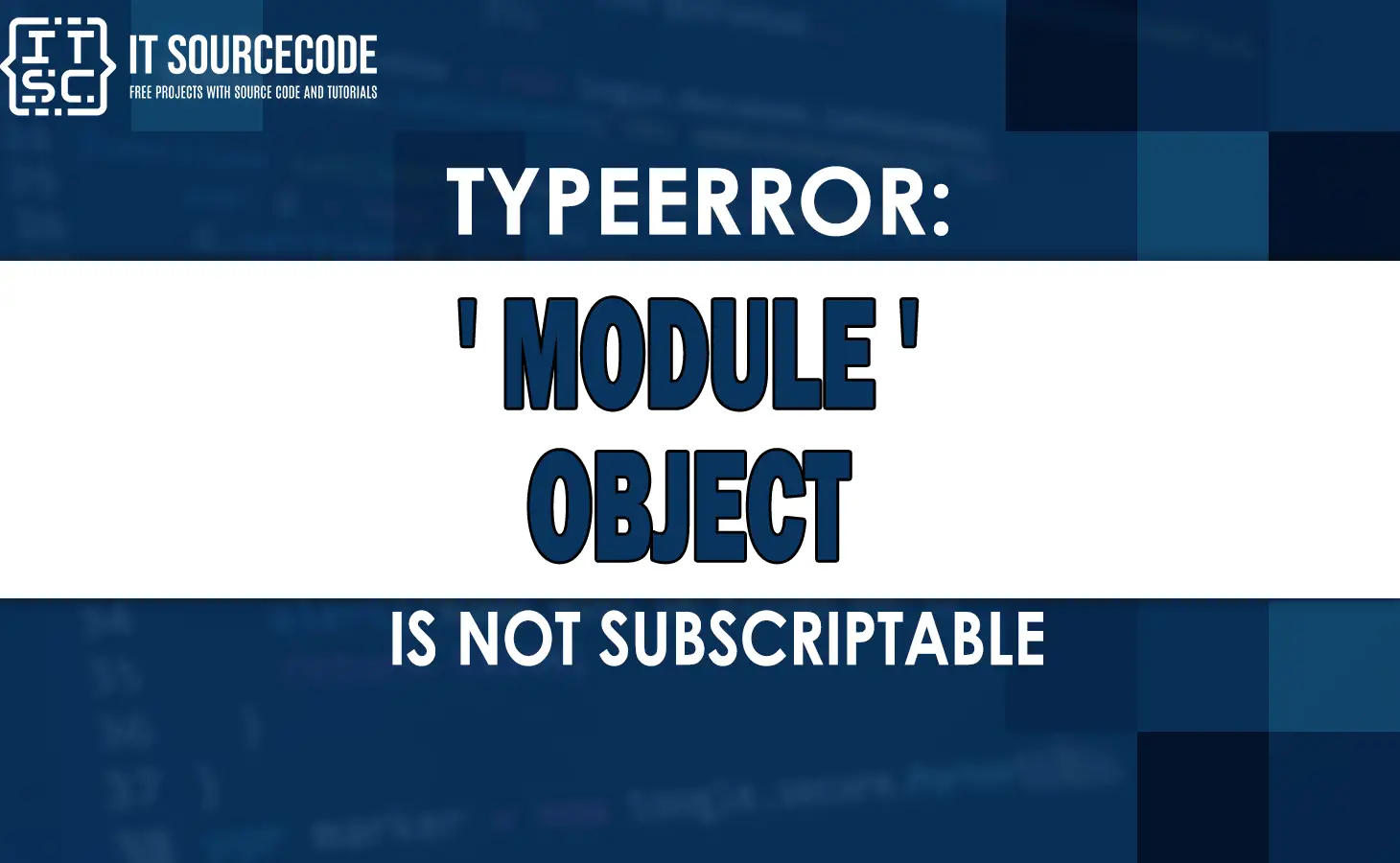If you are running Python project, you may have encountered the error message “typeerror: module object is not subscriptable“.
In this article, we will explain to you what causes the “module’ object is not subscriptable” error and we’ll provide solutions on how to solve it.
We will also discuss some frequently asked questions(FAQs) about this error to help you understand it better.
What Causes the Typeerror: module object is not subscriptable Error?
The “Typeerror: ‘module’ object is not subscriptable” error typically occurs if you are trying to index or slice a module object in Python.
In addition, module objects are not subscriptable, which means that you can’t use square brackets to access or manage their contents.
For example, if you’re trying to access a specific item in a module using square brackets.
You will get the “Typeerror: ‘module’ object is not subscriptable” error.
Here’s an example of how this error can occur:
import math
result = math[0]In this example, we’re trying to access the first item in the math module through using square brackets.
However, since module objects are not subscriptable, the output will be:
Traceback (most recent call last):
File “C:\Users\Dell\PycharmProjects\pythonProject\main.py”, line 3, in
x = math[0]
TypeError: ‘module’ object is not subscriptable
How to solve the module object is not subscriptable?
Here are the different solutions to solve the error typeerror module object is not subscriptable.
Solution 1: Check your code for indexing or slicing module objects
The first solution to solve this error is to check your code for any occurrence where you’re trying to index or slice a module object.
If you find any occurrence, you will need to change your code to remove the indexing or slicing operation.
For example, rather than trying to access a specific key in a module with the use of square brackets.
You can directly call the function or variable by name.
Let’s take a look the example:
import math
x = math.pi
print(x)In this example, we are calling the pi variable in the math module directly, without using square brackets.
The value of “pi“ is assigned to the variable “x” and printed to the console using the “print()” function.
If you run this code, the output will be the value of pi, which is approximately:
3.141592653589793
Solution 2: Use the dot notation to access the attribute of the module
The second solution to solve this error is to use the dot notation to access the attribute of the module.
For example:
import math
radius = 3
circumference = 2 * math.pi * radius
print(circumference)In this example, we import the math module using the import statement.
Then, we use the dot notation to access the pi attribute of the math module.
Which we multiply by the radius variable to compute the circumference of a circle with radius 3.
Finally, we print the circumference value using the print() function.
The output will be:
18.84955592153876
Best practices for using ‘module’ objects
- You can use the dot notation to access attributes of a module.
- Try to avoid using square brackets to access attributes of a module.
Avoiding common mistakes with ‘module’ objects
- Do not try to subscript a module object using square brackets.
- Do not try to call a function that’s an attribute of a module using square brackets.
Tips for troubleshooting ‘not subscriptable’ errors
- Always check your code for example you’re trying to subscript a module object using square brackets.
- Use the dot notation to access attributes of a module instead of square brackets.
Additional Resources
If you’re looking for more information on the Python Typeerror. Here are some additional resources that will be able to help you to understand better about Python Typeerror:
- performancemeasurement.startmeasurement is not a function
- Typeerror: ‘float’ object is not subscriptable [SOLVED]
- Typeerror: cannot pickle ‘_thread.rlock’ object
Conclusion
In conclusion, the “TypeError: ‘module’ object is not subscriptable” error is a common error that can occur if you’re working with module objects in Python.
This error occurs when you are trying to use square brackets to access an attribute of a module, which doesn’t allow.
To prevent this error, it is important to use the dot notation to access attributes of a module instead of using square brackets.
Through following the best practices and avoiding common mistakes, you can write Python code that’s free from “not subscriptable” errors.
FAQs
In Python language, a module is a file consisting of Python definitions and statements.
These files could import into other Python code, this is to allow the programmers to reuse the code across different projects.
The “typeerror: ‘module’ object is not subscriptable” error usually occurs when you try to access an object using square brackets, yet the object you are trying to access is not supported in this operation.
In Python, square brackets are used to access elements of sequences, such as lists and tuples, and to access values in dictionaries using keys.

